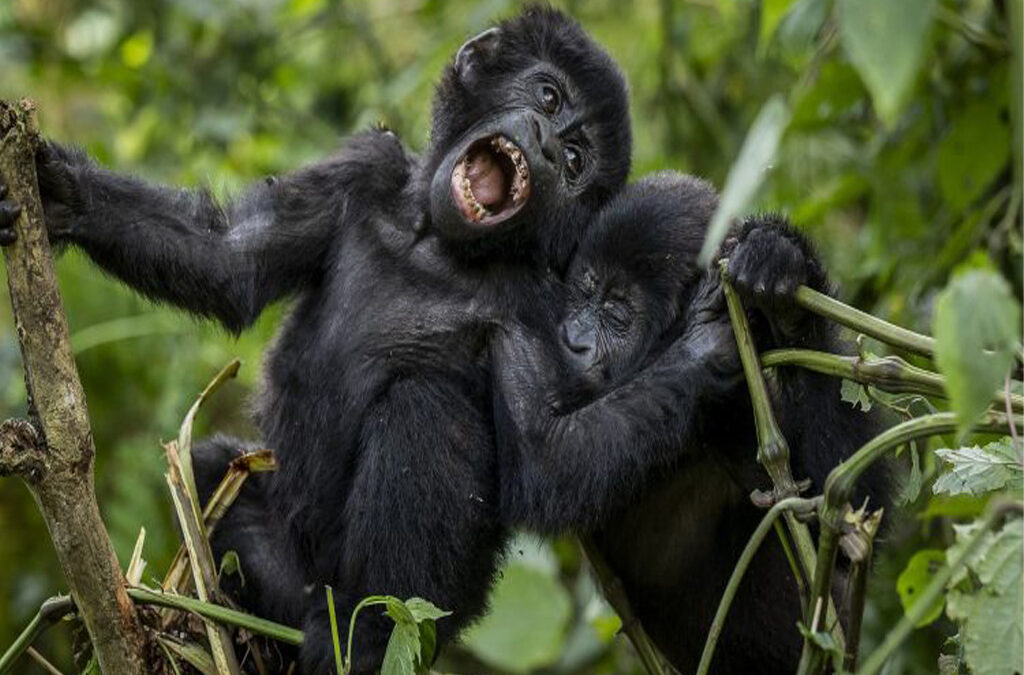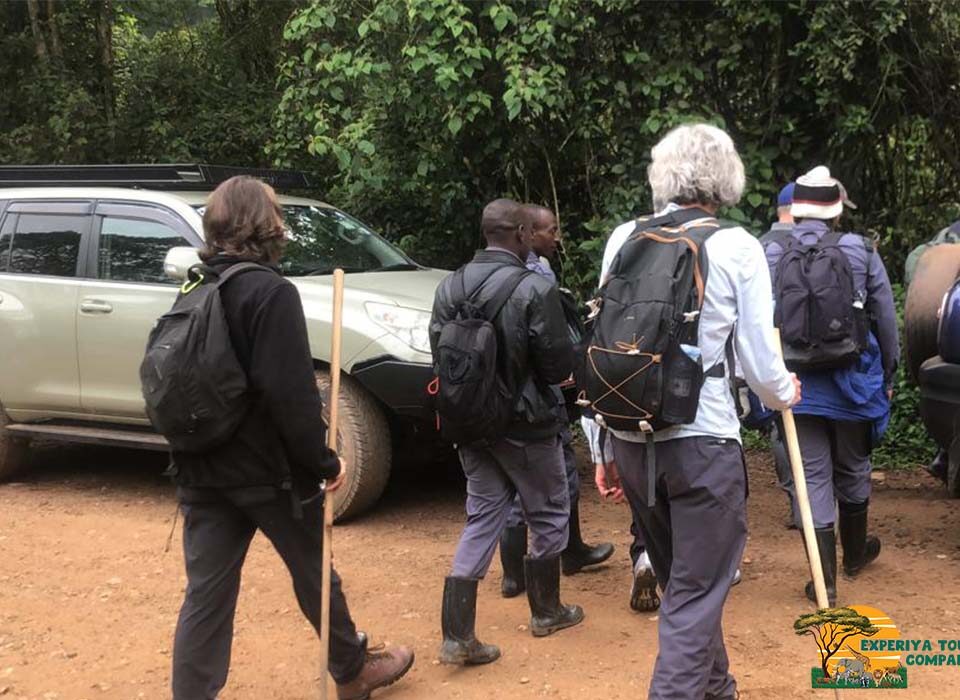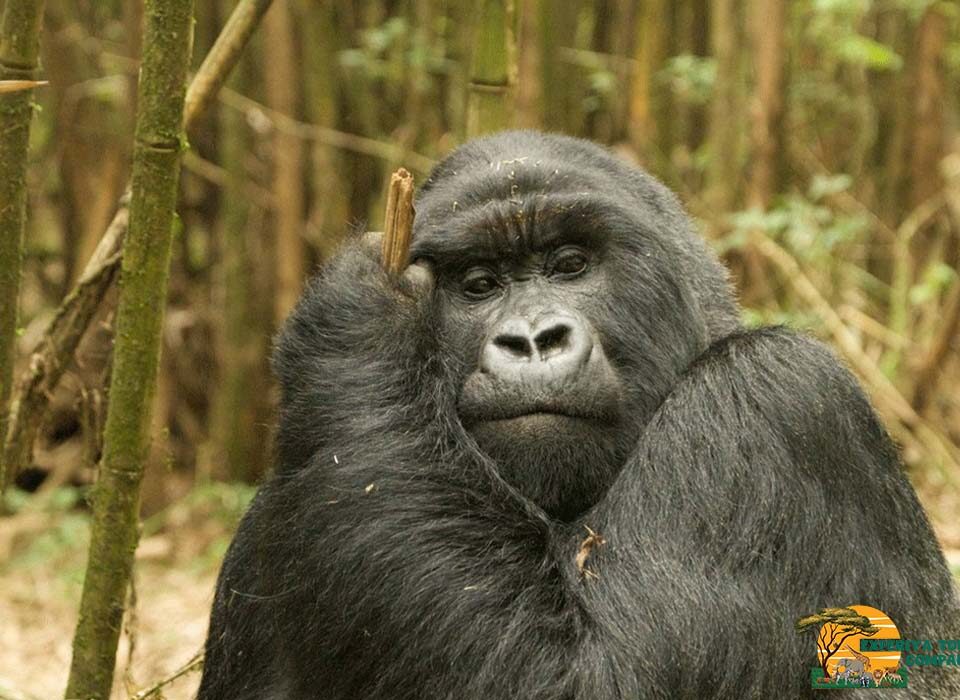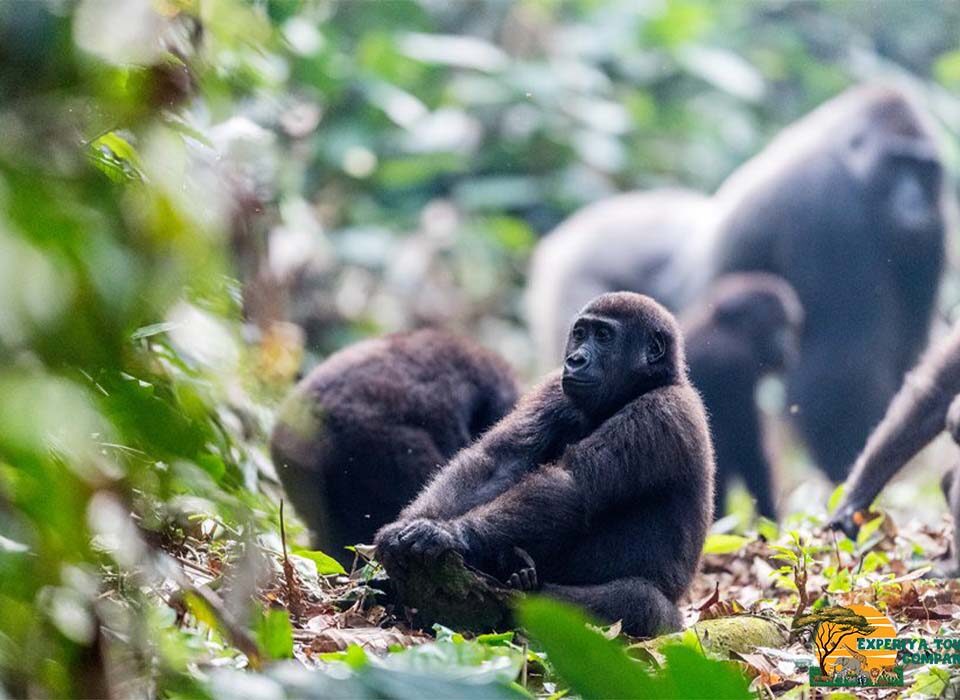
Top 10 Gorilla Trekking Tips for First-Timers
July 25, 2025
Volcanoes National Park and Akagera Safari in One Week
July 25, 2025What If It Rains on Gorilla Trekking Day?
Rain transforms gorilla trekking from a challenging adventure into an epic test of determination. You wake up on your long-awaited trekking day, peer through the lodge window, and watch heavy droplets cascade down the misty mountain slopes. Your heart sinks momentarily, but experienced guides will tell you something remarkable: rain often creates the most memorable and rewarding gorilla encounters.
The Reality of Trekking in Rain
Uganda’s Bwindi Impenetrable Forest and Rwanda’s Volcanoes National Park experience frequent rainfall throughout the year. You cannot predict when storms will arrive, and weather patterns change rapidly in these mountainous regions. Rangers never cancel gorilla treks due to rain alone unless extreme weather conditions pose genuine safety risks.
You must accept that rain amplifies every challenge the forest presents. Steep muddy trails become treacherous slides that test your balance with every step. Tree roots hide beneath slippery leaf litter, creating natural traps for unwary hikers. Your clothing becomes saturated within minutes, and the forest canopy provides only partial protection from persistent downpours.
The dense vegetation drips continuously long after rain stops falling. Branches laden with water droplets soak anyone who brushes against them. Your boots collect thick mud that adds weight to every stride, and the forest floor transforms into a squelching carpet that grabs at your feet.
How Rain Affects Gorilla Behavior
Mountain gorillas actually prefer rainy conditions for several compelling reasons. Rain provides excellent camouflage for their movements through the forest, making them feel more secure and relaxed. They feed more actively during light rain, as the moisture enhances the flavors and nutritional content of their preferred vegetation.
You often find gorilla families huddled together during heavy downpours, creating touching scenes of intimacy and protection. Adult gorillas shield infants with their massive bodies, while juveniles play in puddles with infectious enthusiasm. Rain brings out playful behaviors that dry weather rarely reveals.
The sound of rainfall masks human footsteps and voices, allowing trekkers to approach gorilla groups with less disturbance. Gorillas focus more on feeding and social interactions rather than monitoring potential threats, creating opportunities for incredibly natural observations.
Trackers locate gorilla families more easily after rain because fresh footprints and knuckle marks remain clearly visible in soft mud. The animals leave obvious trails through wet vegetation, and their strong scent lingers longer in humid air.
Essential Rain Gear and Preparation
Waterproof clothing becomes your lifeline during rainy treks. Invest in high-quality rain jackets and pants made from breathable materials that prevent both external moisture and internal condensation. Cheap plastic rain gear tears easily on thorns and creates uncomfortable steam baths that soak you from inside.
Waterproof your backpack completely using dry bags or pack covers. Rain penetrates standard zippers and seams within minutes, destroying cameras, phones, and important documents. Double-bag electronics in waterproof pouches, and carry extra batteries in sealed containers.
Choose hiking boots with aggressive tread patterns and ankle support. Gaiters prevent mud and water from entering your boots, while moisture-wicking socks reduce blister formation. Pack multiple pairs of socks in waterproof bags for the return journey.
Protect your camera equipment with rain covers specifically designed for photography gear. Clear plastic bags work temporarily, but proper rain sleeves allow full camera operation while maintaining protection. Bring lens cloths in waterproof containers for frequent cleaning.
Safety Considerations in Wet Conditions
Rain significantly increases slip and fall risks on steep mountain trails. You must adjust your hiking pace and technique to accommodate slippery conditions. Use trekking poles for additional stability, and test each foothold before committing your full weight.
Stream crossings become dangerous during heavy rainfall as water levels rise rapidly. Guides may reroute groups to safer crossing points, extending trek duration. Never attempt to cross swollen streams without guide approval and assistance.
Hypothermia threatens unprepared trekkers in high-altitude rain. Wet clothing loses insulating properties rapidly, and mountain temperatures drop quickly during storms. Recognize early hypothermia symptoms including uncontrollable shivering, confusion, and loss of coordination.
Lightning poses serious risks in exposed areas above the tree line. Guides monitor weather conditions constantly and seek shelter when electrical activity approaches. Metal equipment including trekking poles and camera tripods attract lightning strikes.
Photography Challenges and Opportunities
Rain creates dramatic lighting conditions that produce extraordinary photographs. Misty forests develop mysterious atmospheres perfect for moody landscape shots. Water droplets on leaves and spider webs create stunning macro photography opportunities.
However, rain complicates camera operation significantly. Lens surfaces fog constantly in humid conditions, requiring frequent cleaning. Changing lenses becomes nearly impossible without risking moisture damage to camera sensors.
Gorillas appear more photogenic in rain as their dark fur contrasts beautifully against wet green vegetation. Rain-soaked infants clinging to mothers create emotionally powerful images. Playful behaviors in puddles and streams offer unique action photography opportunities.
Adjust camera settings for low-light conditions common during rainy weather. Increase ISO sensitivity and open apertures wider to maintain reasonable shutter speeds. Rain reduces available light significantly, even during daytime hours.
Making the Most of Rainy Encounters
Embrace rain as an integral part of the gorilla trekking experience rather than viewing it as an obstacle. Some trekkers report their most profound wildlife encounters occurred during storms when barriers between humans and gorillas seemed to dissolve.
Rain equalizes all trekkers regardless of fitness levels or experience. Everyone struggles with the same challenges, creating shared bonds and memorable stories. The accomplishment of completing a successful rainy trek generates immense satisfaction.
Focus on gorilla behaviors unique to wet conditions. Watch how family members interact during storms, observe feeding patterns on rain-washed vegetation, and document social dynamics that emerge in adverse weather.
Conclusion
Rain transforms gorilla trekking into an adventure that tests your resolve while rewarding your perseverance. You cannot control mountain weather, but you can control your preparation and attitude. Proper gear, realistic expectations, and flexible mindsets turn potentially miserable experiences into triumphant memories.
The forest reveals different secrets during rain, and gorillas display behaviors hidden during sunny days. You join an exclusive group of adventurers who have witnessed mountain gorillas in their most natural state, unfiltered by perfect weather conditions.
When you return home and share your gorilla trekking stories, the rainy day encounters will generate the most animated conversations. Rain adds drama, challenge, and authenticity to an already extraordinary wildlife experience. Those who brave the storms often discover that rain creates the most unforgettable gorilla encounters of all.




